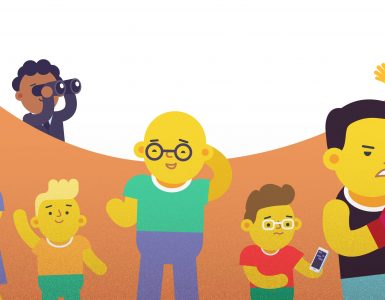Darwin once said that we do not adapt, but perish. This has never been more true than it is today. Digital marketing platforms have become incredibly influential. We all need to be extremely flexible and agile if we want to keep up with the current marketing landscape. With the pandemic, the world has started to move into the digital space. Covid transformed technologies, behaviors, and work life. And while people were adapting to social distancing, companies began their online and digital transformation.
In this context, new movements were launched.
Let’s see what the trends in digital communication are this year, considering the changes that we saw last year.
Mobile Future
Even though mobile interaction is nothing new, the pandemic took it to another level. The need for remote-friendly communication has increased significantly.
Even though most people are online, they spend most of their time on apps or messenger platforms other than just browsers. The most influential communication app is WhatsApp, followed by Facebook Messenger and WeChat. On that basis, companies need to find out which mobile platforms their customers use and find a way to reach them on those apps.
Fewer and fewer people tend to visit regular stores, so companies must find a way to engage with them through mobile apps. If companies want to benefit from mobile communication, they need to find a simple solution that would enable the customers to interact and make the payments as painful as possible.
Interactive Messaging
The situation we’ve faced this past year: social distancing, lockdowns, remote work, homeschooling, etc. have increased our need for closeness and the need for sharing content. In that context, messaging platforms have become quite handy, and are set to become even more popular. Most of the people continued staying at home for a longer period and started using these platforms more frequently to reach out to others.
The market doesn’t just offer messaging apps, but also video chat and messaging software, web conferencing, collaboration tools, task management, you name it. The new applications keep on evolving at a rapid pace to keep up with the needs of the users. Some of them are the whole package, such as Chanty. We are following the latest trends and needs when it comes to digital communication, offering a video conferencing platform with instant messaging, file transfer, and message search. Feel free to check it out for yourself. The market also offers other team communication apps, such as Facebook Messenger, WhatsApp, Skype, Slack, etc.
Voice Assistants
Speech recognition technology is on the rise thanks to Google, Siri, and Alexa. The interest in Amazon’s Alexa has grown significantly this past year. Google Home and alike help you search for information, make a to-do list, set alarms, play music, etc. Imagine talking to a bot that automatically connects you to the right department or gives you the right answer without lifting a finger.
This has become an excellent opportunity for innovation. The devices give you possibilities like creating products that can create audio content.
Artificial Intelligence
From digital assistants such as Alexa to hybrid cars, artificial intelligence is taking over the industries one by one. The next in line is the digital marketing field. Based on the collected data, such as interests, searches, buying behavior, or locations, artificial intelligence like ChatGPT will enable the conducting of customized content campaigns. We all search data throughout the day, so based on the trails we leave, we reveal our interests, needs, and behaviors. On that basis, by using predictive analytics, marketing can reduce the customer’s research and the decision-making process.
Chatbots are gonna be the “it” thing this year. As programs for holding conversations by textual or auditory methods, they can be implemented to provide information or respond to queries. The customers like chatting with chatbots since they are responsive 24/7 and will give you prompt answers.
Some suggest that artificial intelligence will revolutionize the marketing industry and join marketers and consumers.
According to Techgrabyte:
“Artificial intelligence is the biggest commercial opportunity for companies, industries, and nations over the next few decades” and “will increase global GDP by up to 14% between now and 2030,” this means that “AI latecomers will find themselves at a serious competitive disadvantage within the next several years.
Ad-Blockers
Not all things are positive for digital marketing. More and more users are adopting ad blockers by the minute. This year, marketers will have to find a way and overcome those obstacles.
It might not be a big problem for you specifically. You should check your ad analytics and data. They’ll tell you what you need to do. Depending on where you post ads or your audience, the damage might not be that big.
However, if your ads are victim to ad blockers, you’ll need to adapt. Don’t make people change their preferences cause they won’t. Find a way to create more fruitful campaigns. Audiences don’t respond well to ads, but they do like influencer marketing. Influencer marketing is projected to reach $21.1 billion. The predictions are that marketers will start using influencer marketing and intelligent ads that could bypass the ad-blocking technologies.
Wrapping Up
The year 2020, marked by the pandemic, set some new trends and started some other movements. So, we need to be prepared.
Any business needs to adjust to the newest trends. If we don’t get involved, we will be left behind. For anyone in the digital marketing world, adjusting is an essential part of the job by making sure your marketing strategy addresses the latest trends in digital communication. We have to look ahead and try to embrace new technologies and strategies to gain an advantage over our competitors, especially during this period. This is no time to stand still.
So let us know, which of these trends you’d like to try out first.











Mobile-friendly communication. More and more businesses are communicating with their customers through mobile platforms and apps.
Interactive messaging.
Artificial Intelligence.